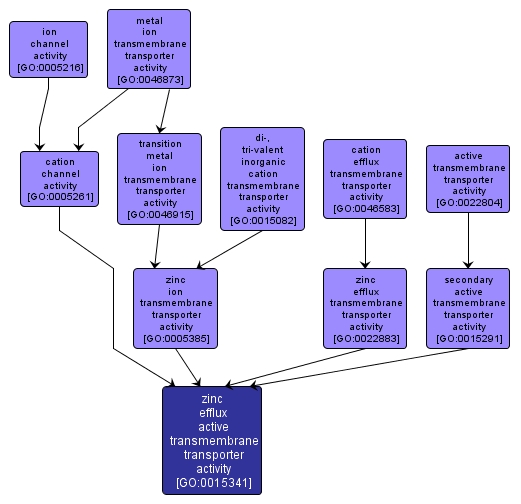GO TERM SUMMARY
|
| Name: |
zinc efflux active transmembrane transporter activity |
| Acc: |
GO:0015341 |
| Aspect: |
Molecular Function |
| Desc: |
Catalysis of the transfer of a zinc ion or zinc ions from the inside of the cell to the outside of the cell across a membrane: Zn2+(out) = Zn2+(in). The activity is driven by proton motive force. |
Synonyms:
- zinc efflux permease activity
|
|

|
INTERACTIVE GO GRAPH
|














